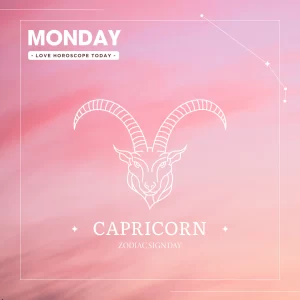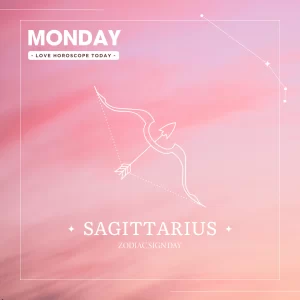Zodiac Signs: Complete Guide to Zodiac Sign Day and Famous NBA Players
What is Zodiac Sign Day ?
Zodiac Sign Day Introduction:
Zodiac Signs In the vast realm of the internet, one can embark on a cosmic journey by delving into the captivating world of astrology through specialized websites like Zodiac Sign Day. These digital platforms offer a plethora of insights, horoscopes, and celestial guidance tailored to individual zodiac signs. Whether you’re a seasoned astrologer or a casual enthusiast, Zodiac Sign Day provides a virtual observatory for exploring the stars and understanding the profound influence they have on our lives.
Horoscope Readings:
Zodiac Sign Day stands out with one of its primary features—the provision of daily, weekly, monthly, and even yearly horoscope readings. Users can access personalized predictions based on their zodiac signs, offering a glimpse into potential opportunities, challenges, and cosmic alignments that may impact their lives.
Astrological Compatibility:
For those navigating the intricate waters of relationships, Zodiac Sign Day, along with its horoscope readings, offers compatibility tools. Users can explore the dynamics between different zodiac signs, gaining insights into the strengths and potential pitfalls of various pairings. These tools can be valuable for both personal and professional relationships.
Birth Chart Analysis:
Serious astrology enthusiasts often turn to Zodiac Sign Day for detailed birth chart analyses. By inputting their date, time, and place of birth, users can generate a comprehensive astrological map that outlines the positions of the planets at the time of their birth. This in-depth analysis provides a nuanced understanding of one’s personality, strengths, challenges, and life path.
Educational Resources:
Zodiac Sign Day serves as an educational hub, offering articles, tutorials, and resources to help users deepen their understanding of astrological principles. From explanations of planetary movements to the significance of different houses in a birth chart, Zodiac Sign Day caters to individuals at various levels of astrological knowledge.
Community Engagement:
Zodiac Sign Day fosters vibrant communities where users can engage in discussions, share experiences, and seek advice from fellow enthusiasts. These forums create a space for individuals to connect over their shared interest in astrology, exchange insights, and learn from one another, enhancing the overall Zodiac Sign Day experience.
Astrology Apps:
In addition to the Zodiac Sign Day website, there is a growing trend of astrology apps that bring celestial guidance to users’ fingertips. These apps often provide on-the-go horoscope readings, personalized notifications, and interactive features, making astrology easily accessible in the digital age.
Conclusion:
Whether you’re looking for daily horoscopes, seeking relationship guidance, or diving deep into the intricacies of your birth chart, Zodiac Sign Day offers a diverse range of tools and resources. As technology continues to advance, Zodiac Sign Day and similar digital platforms will likely play an increasingly central role in bringing the wisdom of the stars to a global audience, fostering a deeper connection between individuals and the cosmic forces that shape our destinies.
How many are there in the zodiac signs?
There are 12 zodiac signs in astrology
| Zodiac Sign | Date Range |
|---|---|
| Aries | March 21 – April 19 |
| Taurus | April 20 – May 20 |
| Gemini | May 21 – June 20 |
| Cancer | June 21 – July 22 |
| Leo | July 23 – August 22 |
| Virgo | August 23 – September 22 |
| Libra | September 23 – October 22 |
| Scorpio | October 23 – November 21 |
| Sagittarius | November 22 – December 21 |
| Capricorn | December 22 – January 19 |
| Aquarius | January 20 – February 18 |
| Pisces | February 19 – March 20 |
What is the difference between Zodiac Sign and Horoscope?
A zodiac sign and horoscope are closely related concepts within astrology, but they refer to different aspects of the astrological system.
Zodiac Sign:
- A zodiac sign is a specific astrological sign associated with the position of the sun at the time of an individual’s birth.
- The zodiac consists of 12 signs, each spanning 30 degrees of the celestial sphere. These signs are Aries, Taurus, Gemini, Cancer, Leo, Virgo, Libra, Scorpio, Sagittarius, Capricorn, Aquarius, and Pisces.
- Your zodiac sign is determined by the position of the sun relative to these constellations at the time of your birth.
Horoscope:
- A horoscope is a more comprehensive astrological chart that includes not only your sun sign (zodiac sign) but also the positions of other celestial bodies like the moon, planets, and specific points in the sky at the time of your birth.
- Horoscopes provide a detailed snapshot of the sky at the moment you were born, creating a personalized map known as a birth chart or natal chart.
- This chart is divided into twelve segments, each associated with one of the zodiac signs, known as houses. The planets in your birth chart are placed within these houses, influencing different areas of your life.
In summary, a zodiac sign is a specific astrological sign determined by the sun’s position at the time of your birth, representing a broad overview of your personality traits. On the other hand, a horoscope is a more detailed astrological chart that includes the positions of various celestial bodies at the time of your birth, providing a comprehensive view of your astrological profile and potential influences on different aspects of your life.
Who invented 12 zodiac signs?
The concept of the zodiac and its twelve signs has ancient origins, and it’s not attributed to a single “inventor.” Instead, it evolved over millennia and has been influenced by several ancient civilizations.
Babylonians:
The earliest roots of the zodiac system trace back to the Babylonians (around 5th century BCE or even earlier). They developed an early form of astrological signs, based on the position of the sun relative to constellations during different periods of the year. Their system was lunar-based, aligned with their twelve lunar months.
Egyptians:
The ancient Egyptians had their form of “star-based” predictions, which might have influenced or been influenced by the Babylonian system.
Greeks:
The modern zodiac system, as we understand it, was heavily refined and popularized by the ancient Greeks. Greek astronomers and astrologers, like Claudius Ptolemy, played a crucial role in developing the framework of Western astrology. His work, the Tetrabiblos, is a foundational text on the subject. The Greeks adopted the Babylonian zodiac and refined it. They introduced the idea of the ‘tropical zodiac,’ which aligns with the seasons rather than the constellations.
Romans:
The Romans, after their conquest of Egypt and interactions with the Greeks, adopted the zodiac system and gave the zodiac signs the Latin names we use today.
Throughout history, knowledge of the zodiac spread to other parts of the world, including India and China, which developed their distinct forms of astrology.
In essence, while the 12-sign zodiac framework has influences from various ancient civilizations, it was the Babylonians who laid its early foundations, with the Greeks later refining and popularizing it. Today, platforms like Zodiac Sign Day continue this ancient tradition, providing a modern and accessible avenue for individuals to explore and understand the wisdom embedded in the zodiac signs. Through personalized horoscopes, compatibility tools, and educational resources, Zodiac Sign Day connects users to the timeless insights that have fascinated civilizations for centuries.
Why people care about 12 zodiac signs?
Seeking Self-understanding: Astrology offers a framework for individuals to understand their characteristics, tendencies, and personalities. Many people feel the zodiac descriptions resonate with their experiences and offer insights into their behaviors.
Guidance and Predictions:
For those who believe, horoscopes and astrological predictions provide guidance on potential challenges and opportunities. This can give a sense of preparation or assurance about the future.
Relational Insights:
The zodiac system gives insights not just into individual traits but also into compatibility with others. This is especially popular in the context of romantic relationships, friendships, and even professional relationships.
Cultural and Traditional Significance:
In many cultures, astrology is deeply rooted in tradition. It plays a role in various life events – from naming ceremonies to marriages. In some cultures, astrological compatibility is considered vital before approving marriages.
Spiritual and Philosophical Connection:
Some people see astrology as a way to connect with the universe, believing that celestial bodies influence earthly events and human lives.
Entertainment and Curiosity:
Even those who don’t strictly believe in the predictive power of the zodiac might read horoscopes out of curiosity or for entertainment.
Sense of Community:
Sharing a zodiac sign can create a sense of camaraderie. Social media, for instance, has numerous groups and pages dedicated to specific zodiac signs where members share experiences and memes.
Seeking Control in an Uncertain World:
Life is unpredictable. For some, believing that the stars and planets might offer some hints about what’s to come can be comforting.
Historical and Literary Interest:
Astrology has been a part of human civilization for millennia. It appears in literature, art, and historical texts, making it a topic of academic and literary interest for some.
Commercial and Business Interests:
There’s a commercial aspect to modern astrology, with a demand for horoscope readings, birth chart analyses, books, apps, and other related products. Platforms like Zodiac Sign Day cater to this demand, providing a modern and accessible avenue for individuals to explore and understand the wisdom embedded in the zodiac signs.
While the belief in and the extent to which one relies on zodiac signs vary greatly among individuals, the combination of personal, cultural, spiritual, and commercial factors ensures that astrology remains a topic of interest for many. Zodiac Sign Day contributes to this fascination by offering a comprehensive and personalized approach to exploring the mysteries of the zodiac.

Aries is one of the constellations within the zodiac signs, situated in the Northern celestial hemisphere between Pisces to the west and Taurus to the east. The name “Aries” derives from the Latin word for ram, and its ancient astronomical symbol is ♈︎. This constellation was cataloged by the 2nd-century astronomer Ptolemy and continues to be one of the 88 modern constellations. Aries occupies a mid-sized area, ranking 39th in overall size, covering 441 square degrees, which is approximately 1.1% of the celestial sphere.
Aries has been associated with a ram since the late Babylonian era, though prior to that, its stars represented a farmhand in different cultural interpretations. Various cultures have incorporated the stars of Aries into distinct constellations, such as twin inspectors in China and a porpoise in the Marshall Islands. Aries is characterized as a relatively faint constellation, featuring only four prominent stars: Hamal (Alpha Arietis, second magnitude), Sheratan (Beta Arietis, third magnitude), Mesarthim (Gamma Arietis, fourth magnitude), and 41 Arietis (also fourth magnitude). Within the constellation, there are few deep-sky objects, and they tend to be quite dim, including several pairs of interacting galaxies. Aries is also associated with several meteor showers, including the Daytime Arietids and the Epsilon Arietids.
History and mythology
Aries is officially recognized as a constellation, constituting a specific region of the night sky, according to the International Astronomical Union. Originally, it was defined in ancient texts as a distinct pattern of stars and has retained its status as a constellation since ancient times. The modern concept of Aries encompasses both the ancient star pattern and the stars surrounding it.
In Babylonian zodiac signs descriptions found in the MUL.APIN clay tablets, Aries was the final station along the ecliptic. This comprehensive table of star risings and settings likely served as an agricultural calendar. In ancient Babylonian tradition, Aries was known as MULLÚ.ḪUN.GÁ, denoting “The Agrarian Worker” or “The Hired Man.” The MUL.APIN, created around 1000 BC, associated the Pleiades with the vernal equinox, a significant alignment during the Middle Bronze Age. The earliest known reference to Aries as a distinct constellation comes from boundary stones dating between 1350 and 1000 BC, where a zodiacal ram figure is distinguishable from other characters. The shift from the constellation representing the Agrarian Worker to the Ram likely occurred later in Babylonian tradition due to its growing association with Dumuzi the Shepherd.
In ancient Egyptian astronomy, Aries was linked with the god Amun-Ra, portrayed as a figure with a ram’s head, symbolizing fertility and creativity. As the location of the vernal equinox, it was known as the “Indicator of the Reborn Sun.” During periods when Aries was prominent, priests would conduct processions carrying statues of Amon-Ra to temples—a practice modified by Persian astronomers in later centuries. In Egypt, Aries held the title “Lord of the Head,” signifying its symbolic and mythological significance.
Aries gained recognition as a constellation primarily during classical times. In Hellenistic astrology, Aries is associated with the golden ram from Greek mythology, which rescued Phrixus and Helle on the orders of Hermes, taking Phrixus to the land of Colchis. This myth involves Phrixus and Helle, the children of King Athamas and his first wife Nephele, who were threatened by their stepmother, Ino. Ino induced famine in Boeotia, then falsely claimed that an oracle demanded Phrixus’s sacrifice to end the famine. Aries, sent by Nephele, intervened and saved Phrixus, although Helle fell into the Dardanelles, also known as the Hellespont, during their flight.
Historically, Aries has been depicted as a crouched, wingless ram facing Taurus. Ptolemy described Alpha Arietis as the ram’s muzzle, though it was not included in his constellation figure but listed as an “unformed star.” The depiction of Aries as a reclining figure was followed by John Flamsteed in his Atlas Coelestis. Astrologically, Aries is associated with the head and its humors and was strongly linked to Mars, both the planet and the god. It was believed to govern Western Europe and Syria and indicated a strong temper in individuals.
The First Point of Aries, marking the vernal equinox, is named after this constellation because the Sun crossed the celestial equator from south to north in Aries over two millennia ago. Hipparchus defined this point in 130 BC, south of Gamma Arietis. However, due to the precession of the equinoxes, the First Point of Aries has shifted into Pisces and will eventually move into Aquarius around 2600 AD. Nevertheless, Aries continues to be associated with the beginning of spring as the Sun appears within its boundaries from late April through mid-May.
Medieval Muslim astronomers represented Aries in various ways, including as a ram, similar to Ptolemy’s depiction. However, some Islamic celestial globes portrayed Aries as an indistinct four-legged animal with antler-like features instead of traditional horns. Early Bedouin observers saw a ram in another part of the sky, featuring the Pleiades as the ram’s tail. The generally accepted Arabic configuration of Aries comprised thirteen stars forming a figure along with five “unformed” stars, four located above the animal’s hindquarters and one above Aries’s head. While differing from other Arab astronomers and Flamsteed’s interpretation, al-Sufi’s depiction portrayed Aries as a running figure looking backward.
Several obsolete constellations were linked to Aries, including Apes, Vespa, Lilium, and Musca (Borealis), all centered on the northern stars. These constellations were introduced by various astronomers, but none of them gained widespread acceptance. Johann Hevelius later renamed one of these constellations “Musca” in 1690 in his Firmamentum Sobiescianum, distinguishing it from the southern fly. This constellation was subsequently renamed Musca Borealis but eventually reabsorbed into Aries, with its stars officially returned to the latter.
The International Astronomical Union designated the three-letter abbreviation “Ari” for Aries in 1922. The official boundaries of Aries were established in 1930 by Eugène Delporte, defining it as a polygon with 12 segments. Its right ascension ranges between 1h 46.4m and 3h 29.4m, while its declination falls within 10.36° and 31.22° in the equatorial coordinate system.
In non-Western astronomy
In traditional Chinese astronomy, several constellations incorporated stars from Aries. The most prominent stars, Alpha, Beta, and Gamma Arietis, were part of a constellation known as Lou , which carried various translations like “bond,” “lasso,” and “sickle.” Lou was associated with the ritual sacrifice of cattle and shared its name with the 16th lunar mansion, corresponding to the full moon closest to the autumnal equinox. Additionally, this constellation was linked to harvest time, potentially symbolizing a woman carrying a basket of food on her head. Stars 35, 39, and 41 Arietis belonged to Wei , a constellation representing a plump abdomen and giving its name to the 17th lunar mansion, associated with granaries. Delta and Zeta Arietis contributed to the constellation Tianyin , believed to depict the Emperor’s hunting companion. Zuogeng , another constellation portraying a marsh and pond inspector, featured Mu, Nu, Omicron, Pi, and Sigma Arietis. He was accompanied by Yeou-kang, representing an official responsible for pasture distribution.
In a system similar to the Chinese, the first lunar mansion in Hindu astronomy was called “Aswini,” named after the traditional designations for Beta and Gamma Arietis, known as the Aswins. Since the Hindu new year began with the vernal equinox, the Rig Veda included over 50 hymns related to the twins, making them prominent figures in the work. Aries itself was known as “Aja” and “Mesha.” In Hebrew astronomy, Aries was referred to as “Taleh” and symbolized either Simeon or Gad, often representing the “Lamb of the World.” Syrians bordering Aries named it “Amru,” while neighboring Turks called it “Kuzi.” In the Marshall Islands, stars from Aries, along with stars from Cassiopeia, Andromeda, and Triangulum, formed a constellation depicting a porpoise. Alpha, Beta, and Gamma Arietis comprised the porpoise’s head, while stars from Andromeda constituted the body, and the bright stars of Cassiopeia formed the tail. Various Polynesian cultures also recognized Aries as a constellation. The Marquesas islanders referred to it as Na-pai-ka, and the Māori constellation Pipiri may have corresponded to modern Aries. Indigenous Peruvian astronomy featured a constellation with most of the same stars as Aries, known as the “Market Moon” or “Kneeling Terrace,” serving as a reminder for the annual harvest festival, Ayri Huay.
Aries | Famous NBA players

Kyrie Andrew Irving (born March 23, 1992) is an American professional basketball player for the Brooklyn Nets of the National Basketball Association (NBA). He was named the NBA Rookie of the Year after being selected by the Cleveland Cavaliers with the first overall pick in the 2011 NBA draft. A seven-time NBA All-Star, Irving won an NBA championship with the Cavaliers in 2016.
Irving played college basketball for the Duke Blue Devils before joining the NBA. He has also played for the Boston Celtics. In addition to his club success, Irving has been a mainstay for the U.S. national team, with whom he has won gold at the 2014 FIBA Basketball World Cup and the 2016 Summer Olympics.
Off the court, Irving has pursued a number of personal and business interests, including acting and philanthropy. He starred in the 2018 film “Uncle Drew” and has also been involved in various charitable endeavors throughout his career.
Introduction to Kyrie Irving:
Kyrie Irving is a renowned figure in the world of basketball, known for his exceptional skills on the court and his contributions to the teams he has played for. Born in 1992, Irving quickly rose to prominence in the NBA after being the first overall pick in the 2011 NBA draft by the Cleveland Cavaliers. His agility, ball-handling, and scoring ability have made him one of the league’s top point guards. Winning an NBA championship in 2016 with the Cavaliers, Irving solidified his status as one of the game’s elite players. Apart from his basketball career, Irving is also recognized for his off-court endeavors, including acting and philanthropy. His dedication to the sport and his various pursuits outside of it make him a multifaceted individual in the world of sports and entertainment.
Kyrie Irving
(1992.3.23)

Taurus, the Latin term for “the Bull,” stands as one of the zodiac signs constellations, positioned in the northern celestial hemisphere. It commands a prominent presence in the winter sky of the Northern Hemisphere. This constellation boasts an ancient heritage, dating back to at least the Early Bronze Age, where it served as a marker for the Sun’s position during the spring equinox. Its significance in the agricultural calendar influenced various bull-related figures in the mythologies of Ancient Sumer, Akkad, Assyria, Babylon, Egypt, Greece, and Rome. Its traditional astronomical symbol, ♉︎, resembles the head of a bull.
Taurus holds a multitude of intriguing features for astronomers. Within its boundaries, Taurus is home to two of the closest open clusters to Earth: the Pleiades and the Hyades, both readily observable with the naked eye. Among its celestial inhabitants, the red giant star Aldebaran shines as the brightest, boasting a first magnitude. Nestled in the northeastern region of Taurus lies Messier 1, more commonly known as the Crab Nebula—a supernova remnant that houses a pulsar. Taurus also encompasses one of the nearby active star-forming regions, the Taurus-Auriga complex, extending into its northern expanse. Among its stellar residents, the variable star T Tauri stands as the archetype for a class of pre-main-sequence stars.
Characteristics
Taurus, a substantial and conspicuous constellation, graces the northern hemisphere’s winter sky. It resides between Aries to the west and Gemini to the east, sharing its borders with various neighboring constellations. To the north, it neighbors Perseus and Auriga, while Orion lies to the southeast, Eridanus to the south, and Cetus to the southwest. Taurus reaches opposition, its furthest point from the Sun, in late November to early December, making it visible throughout the entire night during this period. However, as late March arrives, Taurus begins to set at sunset and gradually disappears behind the Sun’s brilliance from May to July.
Taurus is a part of the zodiac signs, intersected by the ecliptic—the apparent path of the Sun as Earth completes its annual orbit. This intersection with the ecliptic means that the Moon and the planets, whose orbital planes align closely with the ecliptic, often traverse the constellation Taurus at some point during the year. Additionally, the Milky Way’s galactic plane intersects the northeast corner of Taurus, with the galactic anticenter positioned near the border between Taurus and Auriga. Taurus stands as the unique constellation crossed by all three major celestial reference planes: the galactic equator, celestial equator, and ecliptic. Within its boundaries, a ring-like galactic structure known as Gould’s Belt traverses the region.
For astronomical convenience, the International Astronomical Union designated the three-letter abbreviation for Taurus as “Tau.” Belgian astronomer Eugène Delporte defined the official constellation boundaries in 1930, outlining them with a polygon composed of 26 segments. These borders, in the equatorial coordinate system, span from right ascension coordinates of 03h 23.4m to 05h 53.3m and declination coordinates ranging from 31.10° to -1.35°. While Taurus is a predominantly circumpolar constellation, a small portion extends south of the celestial equator, preventing it from being entirely circumpolar at any latitude.
History and mythology
The association of the constellation Taurus with a bull has a rich and ancient history, potentially dating back to the Chalcolithic era, and possibly even further to the Upper Paleolithic. Notably, Michael Rappenglück of the University of Munich has suggested that Taurus is depicted in a cave painting within the Hall of the Bulls at Lascaux, an artwork that may date back to approximately 15,000 BC. Rappenglück believes that this depiction is accompanied by an illustration of the Pleiades, a celestial cluster often referred to as the “seven sisters.” Interestingly, the name “seven sisters” has been used for the Pleiades in various cultures around the world, including indigenous groups in Australia, North America, and Siberia, hinting at a shared ancient origin for this name.
Taurus played a pivotal role in ancient astronomical calendars, particularly in marking the vernal (spring) equinox during the Chalcolithic and Early Bronze Age, spanning from roughly 4000 BC to 1700 BC. After this period, it gradually transitioned into the neighboring constellation Aries. The Pleiades, a prominent star cluster within Taurus, closely approached the Sun during the vernal equinox around the 23rd century BC. In Babylonian astronomy, Taurus was referred to as GU4.AN.NA, known as “The Bull of Heaven.” While some claims suggest that the vernal equinox initially fell within Taurus when the Babylonians established their zodiac signs, there is also evidence pointing to the Babylonian constellation known as “the hired man” (modern Aries) marking this significant celestial event.
In the Old Babylonian Epic of Gilgamesh, Taurus is personified as the “Bull of Heaven,” sent by the goddess Ishtar to confront Gilgamesh for rejecting her advances. In this epic, Gilgamesh’s companion, Enkidu, subdues the bull and offers its hindquarters to the sky, transforming them into the stars we recognize today as Ursa Major and Ursa Minor. Some interpretations place Gilgamesh in the neighboring constellation of Orion, engaged in a celestial battle with Taurus, while others associate him with the Sun, signifying the victory of light over the constellation.
Early Mesopotamian art frequently linked the Bull of Heaven closely with Inanna, the Sumerian goddess of love, fertility, and warfare. In one of the oldest depictions, the bull stands before the goddess’ standard, accompanied by the cuneiform sign for “star-constellation,” which could be interpreted as the precursor to the modern Taurus constellation.
A similar depiction of the Heavenly Bull was found in the Dendera zodiac signs, an Egyptian bas-relief carving that represented the celestial hemisphere using a planisphere. Notably, the orientation of the bull’s horns in ancient cultures varied, with some portraying them as pointing upward or backward, distinct from the Greek depiction where they point forward. In Egyptian culture, Taurus symbolized a sacred bull linked to the rejuvenation of life during spring, as its appearance marked the sacrifice and renewal of the land when the spring equinox entered Taurus.
In Greek mythology, Taurus was associated with Zeus, who transformed into a magnificent white bull to carry off Europa, a renowned Phoenician princess. In some Greek illustrations, only the front part of Taurus is depicted, reflecting the idea that Europa was partly submerged as she was carried away by the bull. Another Greek myth features Taurus as Io, a lover of Zeus, who was transformed into a heifer to conceal her from Zeus’ wife, Hera. This transformation led to Taurus being associated with the heifer.
The Druids held Taurus in high regard, celebrating a Tauric religious festival aligned with the Sun’s passage through the constellation. Among the Inuit people, Taurus is referred to as Sakiattiat, and the Hyades stars are called Nanurjuk, representing the spirit of the polar bear. Aldebaran, one of the stars in Taurus, symbolizes the bear, while the remaining Hyades stars are portrayed as dogs guarding the beast.
In Buddhism, legends suggest that Gautama Buddha was born when the full moon was in Vaisakha, or Taurus. The Wesak Festival, or Vesākha, is celebrated to commemorate Buddha’s birthday, occurring on the first or second full moon when the Sun is in Taurus.
Notably, in 1990, due to the precession of the equinoxes, the Sun’s position on the first day of summer (June 21) shifted from Gemini into Taurus, marking an astronomical shift. Over time, the Sun will gradually traverse Taurus at a rate of 1° eastward every 72 years, with an expected transition into Aries on the first day of summer around 2600 AD.
Taurus | Famous NBA players

Paul George
(1990.5.2)
Paul George is a renowned professional basketball player from the United States. Born on May 2, 1990, in Palmdale, California, he has established himself as one of the premier players in the NBA. George played college basketball for the Fresno State Bulldogs before being selected by the Indiana Pacers with the 10th overall pick in the 2010 NBA Draft.
Throughout his illustrious career, Paul George has been recognized for his exceptional skills and has received numerous accolades. He is a multiple-time NBA All-Star and has been named to several All-NBA Teams. George’s versatility on the court allows him to excel in both offensive and defensive roles, making him a valuable asset to any team.
In addition to his time with the Indiana Pacers, George has also played for the Oklahoma City Thunder and the Los Angeles Clippers. His ability to perform in clutch situations and his leadership qualities have endeared him to fans and teammates alike.
Off the court, Paul George has been involved in various charitable activities and has shown a commitment to giving back to the community. His journey from a young basketball enthusiast in Palmdale to an NBA superstar serves as an inspiration to many aspiring athletes around the world.
In summary, Paul George is not only an outstanding basketball player but also a role model for many. His dedication, hard work, and passion for the game have cemented his legacy as one of the greats in the world of basketball.

Gemini, a constellation of the zodiac signs, graces the northern celestial hemisphere. This celestial figure was meticulously cataloged by the ancient astronomer Ptolemy in the 2nd century AD, and it maintains its status as one of the 88 recognized constellations in contemporary astronomy. The Latin moniker “Gemini” signifies twins, and it finds its mythical roots in the pair of twins, Castor and Pollux, from Greek mythology. In the annals of celestial symbols, Gemini was traditionally represented as (♊︎).
Location
Gemini occupies a celestial position between Taurus to the west and Cancer to the east. It shares its borders with Auriga and Lynx to the north, while Monoceros and Canis Minor lie to the south, and Orion graces the southwestern skies.
In ancient times, Cancer marked the location of the Sun during the northern solstice on June 21. However, due to the phenomenon of axial precession, by the first century AD, this point shifted into Gemini. Notably, in 1990, the Sun’s position during the northern solstice transitioned from Gemini into Taurus, where it will remain until the 27th century AD, before eventually moving into Aries. For the time being, the Sun’s journey through Gemini occurs from June 21 to July 20, a path that will persist until 2062.
Gemini is particularly prominent in the winter skies of the northern hemisphere, remaining visible throughout the night during December and January. To locate this constellation, one can start by identifying its two brightest stars, Castor and Pollux, which are found eastward from the familiar V-shaped asterism of Taurus (the open cluster Hyades) and the three stars comprising Orion’s Belt (Alnitak, Alnilam, and Mintaka). Another method is to mentally draw an imaginary line connecting the Pleiades star cluster in Taurus to the brightest star in Leo, Regulus. This line closely follows the ecliptic and intersects with Gemini, roughly in its middle, just below Castor and Pollux.
Observing the Moon’s movement through Gemini offers a compelling spectacle. In a single night, one can witness the Moon initially appearing to the west of Castor and Pollux, then aligning with them, and finally emerging to the east.
Mythology
In Babylonian astronomy, the celestial duo of Castor and Pollux held the title of the Great Twins. These Twins were esteemed as minor deities, known as Meshlamtaea and Lugalirra, signifying ‘The One who has arisen from the Underworld’ and the ‘Mighty King,’ respectively. Both these appellations could be interpreted as designations for Nergal, a prominent deity in Babylonian mythology responsible for plague and pestilence, who also reigned as the king of the Underworld.
In Greek mythology, Gemini was closely linked with the legendary tale of Castor and Pollux, the offspring of Leda and both Argonauts. Pollux, the son of Zeus, was conceived through Zeus’s seduction of Leda, while Castor was the son of Tyndareus, the king of Sparta and Leda’s husband. Castor and Pollux also played a mythological role as protectors of sailors, particularly in connection with St. Elmo’s fire. Upon Castor’s mortal demise, Pollux beseeched his father Zeus to grant Castor immortality, and Zeus fulfilled his plea by uniting them together in the celestial heavens.
Visualizations
Gemini is prominently defined by its two principal stars, Castor and Pollux, which are situated in such close proximity that they create a distinctive “o” shape, reinforcing the mythological association of the constellation with twinship. Castor, the twin situated above and to the right (as observed from the Northern Hemisphere), is represented by its brightest star, α Gem, a second-magnitude star symbolizing Castor’s head. Pollux, the twin located below and to the left, is depicted by its primary star, β Gem (more commonly known as Pollux), a first-magnitude star representing Pollux’s head. Additionally, the other stars in the constellation can be envisioned as forming two parallel lines that descend from these two main stars, resembling the figures of twins.
Rey has proposed an alternative interpretation to the traditional visualization, which connects the stars of Gemini to depict twins holding hands. In this alternative scheme, Pollux’s torso is symbolized by the star υ Gem, his right hand by ι Gem, and his left hand by κ Gem, with all three stars being of the fourth magnitude. Pollux’s pelvis corresponds to the star δ Gem, his right knee to ζ Gem, his right foot to γ Gem, his left knee to λ Gem, and his left foot to ξ Gem. γ Gem is a second-magnitude star, while δ and ξ Gem are of the third magnitude. Castor’s torso is represented by the star τ Gem, his left hand by ι Gem (which is shared with Pollux), and his right hand by θ Gem, all three being of the fourth magnitude. Castor’s pelvis is denoted by the star ε Gem, his left foot by ν Gem, and his right foot by μ Gem and η Gem, with ε, μ, and η Gem all being of the third magnitude. The brightest star in this constellation is Pollux.
Gemini | Famous NBA players

Allen Iverson
(1975.6.7)
Allen Iverson, often referred to by his nickname “The Answer,” is a retired American professional basketball player. Born on June 7, 1975, in Hampton, Virginia, Iverson is best known for his time with the Philadelphia 76ers in the NBA. Standing at 6 feet tall, he played as a shooting guard and point guard.
Iverson’s basketball journey began at Bethel High School, where he won the Virginia state championship in both basketball and football. His exceptional skills earned him a full scholarship to Georgetown University. At Georgetown, he played for two seasons and was named the Big East Defensive Player of the Year twice.
In 1996, Iverson was selected as the first overall pick in the NBA Draft by the Philadelphia 76ers. Throughout his career, he was known for his scoring ability, agility, and crossover dribble, which left many defenders in awe. Iverson was an 11-time NBA All-Star and won the league MVP award in 2001. That same year, he led the 76ers to the NBA Finals.
Off the court, Iverson was equally influential. He was known for his distinctive style, which included cornrows, tattoos, and oversized clothing. This style became emblematic of a generation of players and fans. Despite facing personal and professional challenges, Iverson’s impact on the game and culture of basketball is undeniable.
After 14 seasons in the NBA, Iverson retired in 2010. He was inducted into the Naismith Memorial Basketball Hall of Fame in 2016, cementing his legacy as one of the greatest basketball players of all time.
In summary, Allen Iverson is not just a basketball legend but also a cultural icon. His contributions to the game and his influence on and off the court have left an indelible mark on the world of sports.

Cancer, one of the twelve constellations of the zodiac signs, resides in the Northern celestial hemisphere. Represented by the old astronomical symbol ♋︎, its name is derived from the Latin word for crab, and it is often depicted as such. Cancer is of moderate size, covering an area of approximately 506 square degrees, and its stars tend to be relatively faint. The brightest star in Cancer, Beta Cancri, has an apparent magnitude of 3.5. Within this constellation, there are two stars known to host planets. Notably, 55 Cancri boasts five planets, including one super-earth and four gas giants, with one of them residing in the habitable zone, featuring temperatures akin to those on Earth. Located at the central region of this celestial area is Praesepe, also known as Messier 44, which is among the closest open clusters to Earth and is a popular target for amateur astronomers.
Characteristics
Cancer is a medium-sized constellation situated in the celestial heavens. It shares its boundaries with neighboring constellations, including Gemini to the west, Lynx to the north, Leo Minor to the northeast, Leo to the east, Hydra to the south, and Canis Minor to the southwest. The International Astronomical Union has designated the three-letter abbreviation “Cnc” for this constellation since 1922. Its official constellation borders, defined by the Belgian astronomer Eugène Delporte in 1930, are outlined by a polygon consisting of three primary sides and seven western edgework-forming sides (as illustrated in the infobox). In the equatorial coordinate system, these borders span between right ascension coordinates of 07h 55m 19.7973s and 09h 22m 35.0364s, while the declination coordinates range from 33.1415138° to 6.4700689°. Covering an area of 506 square degrees, which corresponds to 0.921% of the sky, it ranks 31st among the 88 constellations in terms of size. Cancer becomes best visible at 9 p.m. during the month of March and can be observed between latitudes of +90° and -60°. However, when viewed under urban light pollution, Cancer remains invisible to the naked eye.
History and mythology
Cancer made its debut in astronomical records when Claudius Ptolemy documented it in the 2nd century CE within “The Mathematical Syntaxis,” commonly known as the Almagest. Ptolemy referred to it by its Greek name, Καρκίνος (Karkinos).
In the late 1890s, R.H. Allen proposed a theory without providing any supporting references. He suggested that Cancer may have been linked to the Akkadian Sun of the South, possibly due to its position at the winter solstice in ancient times. Later, it became associated with the fourth month, Duzu (araḫ Dumuzu), which corresponds to our June–July. Cancer was referred to as the Northern Gate of the Sun.
Cancer boasts only a few stars visible to the naked eye, with the brightest stars having a magnitude of just 4th magnitude. Consequently, it was often dubbed the “Dark Sign,” sometimes whimsically described as “black and without eyes.” Dante alluded to its faintness in Paradiso, mentioning that it remained visible throughout the night when it reached its zenith at midnight during a Northern Hemisphere winter month.
In ancient times, Cancer marked the backdrop for the Sun’s most northerly position in the sky, signifying the summer solstice. This alignment occurred when the Earth’s Sun-facing side was tilted maximally towards the south, usually around June 21 in the Gregorian calendar. This date corresponds to when the Sun is directly overhead as far north as 23.437° N. The parallel at which the Sun reaches zenith is still referred to as the Tropic of Cancer, despite the fact that this celestial position now occurs in Taurus due to the precession of the equinoxes.
Notably, the significant conjunction of Jupiter and Saturn in 1563, observed by Tycho Brahe, took place in the vicinity of Cancer, not far from the star cluster Praesepe. This event prompted Tycho Brahe to remark on the inaccuracies of existing ephemerides, inspiring him to initiate his extensive program of astronomical measurements.
In Greek mythology, Cancer is associated with the crab that emerged while Heracles (Hercules) battled the many-headed Lernaean Hydra. Hercules defeated the crab after it bit him on the foot, and as a result, the goddess Hera, who opposed Heracles, placed the crab among the stars.
Cancer | Famous NBA players

Pau Gasol
(1980.7.6)
Pau Gasol is a renowned Spanish professional basketball player who has made significant contributions to the sport throughout his illustrious career. Born on July 6, 1980, in Barcelona, Spain, Gasol’s passion for basketball was evident from a young age. He began his professional career with FC Barcelona in the Liga ACB before making a name for himself in the NBA.
Gasol was drafted by the Atlanta Hawks in the 2001 NBA draft but was immediately traded to the Memphis Grizzlies. During his time with the Grizzlies, he earned the NBA Rookie of the Year award, setting the stage for a successful NBA journey. In 2008, he was traded to the Los Angeles Lakers, where he achieved significant success, winning two NBA championships in 2009 and 2010 alongside Kobe Bryant.
Throughout his NBA career, Gasol played for various teams, including the Chicago Bulls, San Antonio Spurs, Milwaukee Bucks, and Portland Trail Blazers. His versatility as a player, combined with his leadership qualities, made him a valuable asset to any team he joined.
Apart from his club achievements, Gasol has also been a pivotal player for the Spanish national team. He has won numerous medals in European Championships and World Championships, including two silver medals in the 2008 and 2012 Olympics.
Gasol’s impact on the game goes beyond his on-court achievements. He is known for his philanthropic efforts and has been involved in various charitable activities throughout his career. His dedication to the sport, combined with his humanitarian efforts, has solidified his legacy as one of the greatest basketball players of his generation.
In conclusion, Pau Gasol’s journey from a young boy in Barcelona to an NBA champion is a testament to his talent, hard work, and dedication. His contributions to basketball, both on and off the court, have left an indelible mark on the sport’s history.

Leo, pronounced as /ˈliːoʊ/, is a constellation within the zodiac signs, situated between Cancer, the crab, in the west, and Virgo, the maiden, in the east. This celestial formation graces the Northern celestial hemisphere and derives its name from the Latin word for lion. In ancient Greek mythology, it symbolizes the Nemean Lion, famously vanquished by the legendary Greek hero Heracles as part of his twelve labors. The traditional astronomical symbol for Leo is (♌︎). Originally cataloged by the 2nd-century astronomer Ptolemy, Leo endures as one of the 88 modern constellations today. It stands out prominently in the night sky, characterized by its abundance of bright stars and a distinct shape reminiscent of a crouching lion. Notably, the lion’s mane and shoulders collectively form an asterism known as “The Sickle,” a pattern that may appear to contemporary stargazers as a reversed “question mark.”
History and mythology
Leo is among the earliest constellations to have been recognized, with archaeological findings suggesting that the Mesopotamians identified a similar constellation as early as 4000 BCE. It bore various names across different cultures: the Persians referred to it as Ser or Shir, the Turks as Artan, the Syrians as Aryo, the Jews as Arye, and the Indians as Simha, all of which signify “lion.”
In Sumeria, there’s a belief that Leo represented the formidable monster Humbaba, ultimately defeated by Gilgamesh. Babylonian astronomers named the constellation UR.GU.LA, signifying the “Great Lion,” with the prominent star Regulus known as “the star that stands at the Lion’s breast.” Regulus held strong regal associations and was recognized as the King Star.
Greek mythology ties Leo to the Nemean Lion, slain by Heracles (known as Hercules to the Romans) during the initial of his twelve labors. This fearsome lion would abduct women, leading nearby warriors on futile missions to rescue them from its cave lair. The lion was impervious to conventional weaponry, rendering swords, clubs, and spears ineffective. Heracles, realizing that he had to defeat the lion with his bare hands, entered the creature’s den and confronted it at close quarters. In a daring feat, he caught the lion mid-pounce, gripping its forelegs and hind legs in separate hands, and bent its back, ultimately breaking its spine and rescuing the trapped maidens. Zeus immortalized this heroic deed by placing the Nemean Lion in the night sky.
In Roman poetry, Leo was referred to as Herculeus Leo and Violentus Leo. It was also associated with Bacchi Sidus, signifying the star of Bacchus, as Bacchus was closely linked to the lion. Additionally, Manilius named it Jovis et Junonis Sidus, translating to the Star of Jupiter and Juno.
Visualizations
Leo is typically depicted with a distinctive sickle-shaped asterism of stars representing the back of the Lion’s head. This celestial sickle is formed by six prominent stars: Epsilon Leonis, Mu Leonis, Zeta Leonis, Gamma Leonis, Eta Leonis, and Alpha Leonis. The Lion’s tail is defined by the presence of Beta Leonis, also known as Denebola, while the remainder of its majestic body is outlined by Delta Leonis and Theta Leonis.
Meteor showers
The Leonid meteor shower takes place in November, reaching its peak around November 14-15, with a radiant point near Gamma Leonis. This meteor shower is associated with Comet Tempel-Tuttle, which leads to notable outbursts roughly every 35 years. Typically, the Leonids have an average peak rate of about 10 meteors per hour. Additionally, there is a lesser meteor shower known as the January Leonids, which reaches its maximum activity between January 1 and 7.
Astrology
As of 2002, the Sun’s presence within the constellation Leo spans from August 10 to September 16.[14] In tropical astrology, the Sun is associated with the sign Leo from July 23 to August 22, while in sidereal astrology, it aligns with Leo from August 16 to September 17.
Leo | Famous NBA players

Magic Johnson
(1959.8.14)
Earvin “Magic” Johnson Jr. is an American former professional basketball player and former president of basketball operations of the Los Angeles Lakers of the National Basketball Association (NBA). He is widely regarded as one of the greatest basketball players of all time, and his achievements on the court are a testament to his skill and dedication to the sport.
Born on August 14, 1959, in Lansing, Michigan, Magic Johnson’s basketball journey began at a young age. He first garnered national attention as a high school player and later played college basketball for the Michigan State Spartans. It was during his time with the Spartans that he led the team to the NCAA championship in 1979, defeating Larry Bird’s Indiana State team in what would become one of the most iconic matchups in college basketball history.
In 1979, Magic Johnson was selected as the first overall pick by the Los Angeles Lakers in the NBA draft. This marked the beginning of a storied NBA career that spanned 13 seasons. During his time with the Lakers, Johnson led the team to five NBA championships and was named the NBA Finals MVP three times. His unique playing style, characterized by his exceptional passing ability and court vision, earned him the nickname “Magic.”
Off the court, Johnson’s impact was equally significant. In 1991, he announced that he had contracted HIV, which led to his early retirement from basketball. However, this diagnosis did not deter him. Instead, he became an advocate for HIV/AIDS prevention and awareness. Over the years, Johnson has also been a successful businessman, owning several businesses and being an influential figure in the entertainment industry.
In 2017, Magic Johnson returned to the Lakers as the president of basketball operations, a position he held until 2019. Throughout his life, whether on the basketball court, in business, or as an advocate for important causes, Magic Johnson has exemplified excellence and has left an indelible mark on the world of sports and beyond.
In summary, Magic Johnson’s legacy is not just defined by his incredible basketball skills but also by his resilience, leadership, and commitment to making a positive impact in the community. He remains an inspiration to many, both in the world of basketball and outside of it.

Virgo is among the constellations of the zodiac signs, known by its Latin name for “maiden,” and characterized by its old astronomical symbol . Positioned between Leo in the west and Libra in the east, it stands as the second-largest constellation in the night sky (only surpassed by Hydra) and holds the title of the largest zodiac signs constellation. The intersection of the ecliptic and the celestial equator occurs within Virgo, as well as Pisces. Notably, the sun aligns directly over the equator in this constellation during the September equinox. Virgo is readily identified by its brightest star, Spica.
Mythology
In the ancient Babylonian MUL.APIN texts dating back to the 10th century BC, a portion of what is now the Virgo constellation was referred to as “The Furrow,” symbolizing the goddess Shala and her representation of the ear of grain. One specific star within this constellation, Spica, still carries this heritage in its name, as “Spica” is Latin for “ear of grain.” This connection to agriculture and fertility was central to the constellation’s significance. The Virgo constellation in the views of early Greek astronomers was linked to their goddess of wheat and farming, Demeter, while the Romans associated it with their goddess Ceres. Alternatively, the constellation was sometimes identified with the virgin goddess Iustitia or Astraea, who held the scales of justice (now represented by the constellation Libra).[10] Another Greek myth from later antiquity portrayed Virgo as Erigone, daughter of Icarius of Athens, who was transformed into the constellation along with her father. Dionysus, in some versions of the story, is said to have placed them among the stars as Boötes and Virgo, respectively. Additionally, the spring goddess Persephone, daughter of Zeus and Demeter, was associated with Virgo. She married Hades and resided in the Underworld during the summer months.Hyginus’ Poeticon Astronomicon from the 1st century BC identifies Parthenos (Παρθένος) as the daughter of Apollo and Chrysothemis, who died as a maiden and was immortalized as the constellation Virgo.[17] According to another account by Diodorus Siculus, Parthenos was the daughter of Staphylus and Chrysothemis, sister to Rhoeo and Molpadia (Hemithea). After a suicide attempt, Apollo carried her and Hemithea to Chersonesus, where she became a local deity.[18] Strabo mentions the worship of a goddess named Parthenos throughout Chersonesus.[19] During the Middle Ages, Virgo was at times associated with the Blessed Virgin Mary. In Greek mythology, the constellation is also linked to Dike, the daughter of Zeus and the goddess of justice, often depicted holding the scales of justice.
Location
Virgo graces the spring skies of the Northern Hemisphere, remaining visible throughout the nights of March and April. It holds the distinction of being the largest zodiac signs constellation, with the Sun taking 44 days to traverse its boundaries, a duration greater than any other zodiac signs. This celestial journey occurs from September 16 to October 30 between 1990 and 2062. Virgo occupies the third quadrant of the Southern Hemisphere (SQ3) and is observable within latitudes ranging from +80° to -80°.
Spica, the brilliant star, serves as an excellent guide for locating Virgo. You can easily spot it by tracing the curve of the Big Dipper/Plough to Arcturus in Boötes and then continuing along the same curve, a phrase often remembered as “follow the arc to Arcturus and speed on to Spica.”
Due to the phenomenon of precession, the first point of Libra, also known as the autumn equinox point, lies very close to β Virginis within the boundaries of Virgo. This marks one of the two locations in the sky where the celestial equator intersects the ecliptic, the other being the first point of Aries, now positioned within the Pisces constellation. From the 18th century BC until the 4th century BC, the Sun graced Libra during the autumnal equinox before transitioning into Virgo. In the future, this point will move into the neighboring Leo constellation, expected to occur around the year 2440.
Virgo | Famous NBA players

Kobe Bryant
(1978.8.23)
Kobe Bryant was an iconic American professional basketball player. Born on August 23, 1978, in Philadelphia, Pennsylvania, he spent his entire 20-year career with the Los Angeles Lakers in the National Basketball Association (NBA). Known for his scoring prowess, Bryant was a five-time NBA champion, two-time NBA Finals MVP, and an 18-time All-Star. He was also the youngest player in league history to reach 30,000 career points.
Bryant entered the NBA directly from high school and quickly made a name for himself. Over the years, he established himself as one of the greatest basketball players of all time. Off the court, Bryant also made significant contributions. He won an Academy Award for his animated short film “Dear Basketball” and was involved in various philanthropic activities.
Tragically, on January 26, 2020, Bryant, along with his daughter Gianna and seven others, died in a helicopter crash in Calabasas, California. His untimely death was mourned by fans and fellow athletes worldwide. Today, his legacy continues to inspire many young athletes and basketball enthusiasts around the globe.
In summary, Kobe Bryant was not just a basketball player; he was a legend, an inspiration, and a symbol of excellence in the world of sports. His dedication, passion, and achievements on and off the court will forever be remembered and celebrated.

James Harden
(1989.8.26)
James Harden, born on August 26, 1989, in Los Angeles, California, is an American professional basketball player who has made a significant mark in the NBA. Known for his distinctive beard and exceptional skills on the court, Harden has become one of the most recognizable and influential figures in the world of basketball.
Harden’s journey to NBA stardom began at Arizona State University, where he played for two seasons and earned All-American honors. Recognizing his potential, the Oklahoma City Thunder selected him with the third overall pick in the 2009 NBA draft. During his time with the Thunder, Harden’s talent was evident, and he played a crucial role in helping the team reach the NBA Finals in 2012.
However, it was after his move to the Houston Rockets in 2012 that Harden truly blossomed as a player. He quickly established himself as the team’s leader and became known for his scoring prowess, ball-handling skills, and ability to create plays for his teammates. Over the years, Harden has received numerous accolades, including the NBA Most Valuable Player (MVP) award in 2018. His scoring achievements are particularly noteworthy, with multiple seasons averaging over 30 points per game.
In 2021, seeking a new challenge and an opportunity to win an NBA championship, Harden joined the Brooklyn Nets. Teaming up with other NBA superstars like Kevin Durant and Kyrie Irving, Harden continues to be a dominant force on the court, contributing significantly to the team’s success.
Off the court, Harden is known for his philanthropy and commitment to giving back to the community. He has been involved in various charitable initiatives, focusing on education and the well-being of underprivileged children.
In conclusion, James Harden is not just an exceptional basketball player but also an inspiration to many. His journey from a young boy in Los Angeles to an NBA superstar is a testament to his dedication, hard work, and passion for the game. As he continues to break records and set new standards, Harden’s legacy in the world of basketball is assured.

Libra, pronounced as /ˈliːbrə/, is a constellation of the zodiac signs situated in the Southern celestial hemisphere. Its name, originating from Latin, translates to “weighing scales.” Its ancient astronomical symbol is (♎︎). Although it lacks any first magnitude stars, Libra is characterized by its relatively faint appearance. Positioned between Virgo to the west and Scorpius to the east, the brightest star in this constellation is Beta Librae, also known as Zubeneschamali. Libra is known to host three star systems with planets.
History and mythology
In Babylonian astronomy, Libra was recognized as MUL Zibanu, signifying the “scales” or “balance.” Alternatively, it was referred to as the Claws of the Scorpion. These scales held a sacred significance, representing the domain of the sun god Shamash, who was also the patron of truth and justice.
Ancient Greece also associated Libra with the Scorpion’s Claws. Over time, Libra has been symbolically linked with concepts of law, equity, and civility. In Arabic, “zubānā” translates to “scorpion’s claws,” likely sharing similar meanings in other Semitic languages. This linguistic resemblance may have contributed to the transformation of the Scorpion’s claws into the Scales. Notably, the names of Libra’s two primary stars in Arabic, Zubenelgenubi and Zubeneschamali, mean “southern claw” and “northern claw,” respectively.
There is also a suggestion that the scales allude to the equinox, signifying the moment when the sun enters this part of the ecliptic during the autumnal equinox, resulting in equal durations of day and night. Libra’s historical role as the equinox location led to the name “First Point of Libra” for the equinox, although this alignment shifted due to the precession of the equinoxes around 730 BC.
In ancient Egypt, the three brightest stars in Libra (α, β, and σ Librae) formed a constellation resembling a boat. Interestingly, Libra was not mentioned by Eudoxus or Aratus. It found references in ancient Egyptian records, including Manetho (3rd century B.C.) and Geminus (1st century B.C.), and was later included by Ptolemy in his list of 48 asterisms. While Ptolemy cataloged 17 stars within Libra, Tycho Brahe counted 10, and Johannes Hevelius identified 20. Libra only acquired its status as a constellation during ancient Rome, representing the scales held by Astraea, the goddess of justice, closely associated with Virgo in Greek mythology.
The constellation
Libra is surrounded by neighboring constellations, with Serpens’ head to the north, Virgo to the northwest, Hydra to the southwest, the edge of Centaurus to the southwest, Lupus to the south, Scorpius to the east, and Ophiuchus to the northeast. It occupies an area of 538.1 square degrees, accounting for approximately 1.304% of the night sky, and holds the 29th position among the 88 constellations in terms of size. The three-letter abbreviation assigned to the constellation by the International Astronomical Union in 1922 is “Lib.” The official boundaries of the constellation, as established by Eugène Delporte in 1930, are delineated by a polygon consisting of 12 segments, as illustrated in the infobox. In the equatorial coordinate system, the right ascension coordinates for these borders span from 14h 22m 08.08s to 16h 02m 17.23s, while the declination coordinates range from -0.47° to -30.00°. Libra can be fully observed by skywatchers located south of latitude 60°N.
Planetary systems
Within the boundaries of Libra lies the Gliese 581 planetary system, comprising the star Gliese 581, three confirmed planets, and two planets whose existence is yet to be definitively confirmed. Among these, Gliese 581d and Gliese 581g stand out as potential candidates for hosting life, although there is ongoing debate and uncertainty regarding the existence of Gliese 581g within the scientific community. Gliese 581c is notable for being the first Earth-like exoplanet discovered within the habitable zone of its parent star. Furthermore, Gliese 581e is remarkable as possibly the smallest mass exoplanet known to orbit a regular star to date. These exoplanets hold significant importance in assessing the possibility of extraterrestrial life beyond our Solar System. In late September 2010, the family of potential habitable planets was expanded to include exoplanets orbiting red dwarf stars, prompted by the discovery of Gliese 581g, a tidally locked planet situated squarely within the habitable zone. Studies on weather patterns suggest that tidally locked planets could still offer conditions conducive to supporting life.
Deep-sky objects
Within the boundaries of Libra, you can find the notable presence of NGC 5897, a prominent globular cluster. Situated at a distance of 50,000 light-years from Earth, this cluster is relatively large and shines with an integrated magnitude of 9. Additionally, Libra hosts IC 1059, a galaxy located within the constellation.
Libra | Famous NBA players

Kevin Durant
(1988.9.29)
Kevin Wayne Durant, born on September 29, 1988, is an American professional basketball player. He currently plays for the Brooklyn Nets of the National Basketball Association (NBA). Durant’s basketball journey began at the University of Texas, where he played for one season before declaring for the NBA draft. He was subsequently selected as the second overall pick by the Seattle SuperSonics in the 2007 NBA draft.
Durant’s talent and skills quickly made him one of the league’s top players. He has been named an NBA All-Star multiple times and has won two NBA championships. In addition to his team successes, Durant has achieved numerous individual accolades, including two NBA Finals MVP awards.
Known for his scoring ability, Durant has led the NBA in scoring multiple times. His playing style is versatile, allowing him to play both as a forward and a guard. Standing at 6 feet 10 inches, Durant’s height, combined with his skills, makes him a formidable opponent on the court.
Off the court, Durant is also known for his philanthropic efforts. He has donated millions to various causes, including educational initiatives and disaster relief efforts. His commitment to giving back to the community has earned him respect and admiration from fans and peers alike.
In conclusion, Kevin Durant is not only a basketball superstar but also a role model for many. His dedication, hard work, and passion for the game, combined with his off-court contributions, make him one of the most influential figures in the world of sports.

Scorpius, a zodiac signs constellation, finds its place in the Southern celestial hemisphere. Nestled between the constellations of Libra to the west and Sagittarius to the east, Scorpius is a venerable constellation with roots predating Greek astronomy. It’s among the 48 constellations cataloged by the Greek astronomer Ptolemy in the second century and is represented by the old astronomical symbol ♏︎.
Mythology
In Greek mythology, several myths attribute the constellation Scorpius to Orion. In one version of the tale, Orion boasted to the goddess Artemis and her mother, Leto, about his intention to slay every creature on Earth. In response, Artemis and Leto dispatched a scorpion to confront and kill Orion.[9] Their epic battle drew the attention of Zeus, who elevated both the valiant adversaries to the heavens as a reminder to mortals to restrain their excessive pride. Another rendition of the myth suggests that it was Apollo, Artemis’ twin brother, who sent the scorpion to eliminate Orion. This happened after Orion won the favor of the goddess by acknowledging her superiority. Following Zeus’s intervention, Orion hunts in the winter but seeks refuge during the scorpion’s summer reign. In both versions, Artemis pleaded with Zeus to raise Orion to the celestial sphere. In a separate Greek myth unrelated to Orion, the celestial scorpion encountered Phaethon while he was at the reins of his father Helios’ Sun Chariot.[10]
Origins
The Babylonians referred to this constellation as MUL.GIR.TAB, which translates to ‘the Scorpion.’ The name can be literally interpreted as ‘the creature with a burning sting.'[11] In certain ancient accounts, the constellation Libra was regarded as the Scorpion’s claws. Babylonians called Libra the Claws of the Scorpion, known as zibānītu in their language (similar to Arabic zubānā), and in Greek, it was referred to as χηλαι.[12]
Astrology
The Western astrological sign Scorpio doesn’t perfectly align with the astronomical constellation. In terms of astronomy, the sun passes through Scorpius for only six days, spanning from November 23 to November 28. Some of this variation is attributed to the presence of the constellation Ophiuchus, which is considered by only a few astrologers. Scorpius corresponds to the Hindu nakshatras Anuradha, Jyeshtha, and Mula.
Notable features
Scorpius boasts numerous bright stars, each with its own distinctive name and characteristics. Notable members of this constellation include:
Antares (α Sco), known as the “rival of Mars” due to its striking reddish hue.
β1 Sco (Graffias or Acrab), a triple star system.
δ Sco (Dschubba, “the forehead”).
θ Sco (Sargas, with an unknown origin for its name).
ν Sco (Jabbah).
ξ Sco.
π Sco (Fang).
σ Sco (Alniyat).
τ Sco (Paikauhale).
At the tip of Scorpius’s curved tail, you can find λ Sco (Shaula) and υ Sco (Lesath), both of which mean “sting.” Due to their proximity, λ Sco and υ Sco are sometimes referred to as the Cat’s Eyes.
These bright stars in the constellation create a pattern resembling a longshoreman’s hook, and most of them are massive members of the nearby OB association known as Scorpius–Centaurus.
The star δ Sco experienced a sudden increase in brightness, flaring from a stable 2.3 magnitude star to 1.9 in just a few weeks in July 2000. It has since become a variable star, fluctuating between magnitudes 2.0 and 1.6. This variability makes it the second brightest star in Scorpius at its brightest phase.
U Scorpii holds the distinction of being the fastest-known nova, with a period of about 10 years.
The close pair of stars ω1 Scorpii and ω² Scorpii, while appearing as an optical double, can be resolved by the unaided eye. One is a yellow giant, while the other is a blue B-type star belonging to the Scorpius-Centaurus Association.
Interestingly, what is now known as the star σ Lib was once designated as γ Sco, even though it falls well within the boundaries of Libra. In ancient Greek times, the entire constellation of Libra was considered to be the claws of Scorpius, known as Chelae Scorpionis. Later, during Roman times, the division into Libra was formalized.
Deep-sky objects
Scorpius, owing to its position astride the Milky Way, hosts a wealth of deep-sky objects, making it a treasure trove for astronomers. Among these celestial gems are:
Messier 6, famously known as the Butterfly Cluster.
Messier 7, recognized as the Ptolemy Cluster.
NGC 6231, situated near ζ² Sco.
Messier 4, a globular cluster.
Messier 80 (NGC 6093), another globular cluster of magnitude 7.3, located a distant 33,000 light-years from Earth. This compact Shapley class II cluster is highly concentrated and dense at its core. Charles Messier discovered M80 in 1781, and it became a site of exceptional interest in 1860 when Arthur von Auwers identified the nova T Scorpii within it.
Additionally, Scorpius features NGC 6302, aptly named the Bug Nebula, a bipolar planetary nebula. Another notable presence is NGC 6334, often referred to as the Cat’s Paw Nebula, which serves as both an emission nebula and a star-forming region.
Scorpio | Famous NBA players

Russell Westbrook
(1988.11.12)
Russell Westbrook III, born on November 12, 1988, in Long Beach, California, is an American professional basketball player. He has made a significant mark in the NBA, playing for teams such as the Oklahoma City Thunder, Houston Rockets, Washington Wizards, and Los Angeles Lakers.
Westbrook’s journey to NBA stardom began at Leuzinger High School, where he showcased his basketball prowess. He then took his talents to the University of California, Los Angeles (UCLA), where he played for two seasons before declaring for the NBA draft in 2008. The Seattle SuperSonics (now Oklahoma City Thunder) selected him with the fourth overall pick.
Throughout his illustrious career, Westbrook has been known for his explosive athleticism, unmatched energy, and triple-double prowess. He has achieved numerous accolades, including being a nine-time NBA All-Star and two-time NBA All-Star Game MVP. In the 2016-2017 season, he made history by averaging a triple-double for the entire season, a feat previously accomplished only by Oscar Robertson. For this outstanding performance, Westbrook was awarded the NBA Most Valuable Player (MVP).
Off the court, Westbrook is also a notable figure. He has been involved in various philanthropic activities, especially through his Why Not? Foundation, which aims to inspire children to dream big and never give up.
In recent years, Westbrook has transitioned between teams, playing for the Houston Rockets, Washington Wizards, and most recently, the Los Angeles Lakers. Regardless of the jersey he wears, Westbrook’s passion, dedication, and commitment to the game remain unwavering.
In conclusion, Russell Westbrook is not just a basketball player; he is a phenomenon. His on-court achievements, coupled with his off-court contributions, make him one of the most influential figures in the world of basketball. Whether you’re a fan of the teams he’s played for or just a lover of the game, Westbrook’s legacy is undeniable.

Sagittarius, one of the constellations of the zodiac signs, graces the Southern celestial hemisphere. It stands as one of the 48 constellations documented by the 2nd-century astronomer Ptolemy and endures as one of the 88 modern constellations. This constellation is symbolized by the archer, depicted as a centaur drawing a bow. Positioned between Scorpius and Ophiuchus in the west and Capricornus and Microscopium in the east, Sagittarius’ Latin name translates to “archer.” Notably, the westernmost part of Sagittarius holds the center of the Milky Way, home to Sagittarius A.
Mythology
In Babylonian lore, Sagittarius was linked to the god Nergal, portrayed as a centaur-like being drawing a bow and releasing an arrow. This depiction typically featured wings, two heads—one resembling a panther and the other human—and a scorpion’s stinger arched over its more traditional horse’s tail. The Sumerian moniker Pabilsag comprises two components: “Pabil,” signifying ‘elder paternal kinsman,’ and “Sag,” denoting ‘chief’ or ‘head.’ Consequently, the name can be interpreted as the ‘Forefather’ or ‘Chief Ancestor.’ This ancient figure bears a resemblance to modern representations of Sagittarius.
Greek mythology
In Greek mythology, Sagittarius is typically associated with a centaur—a creature that’s half human and half horse. However, this identity has led to some ambiguity, possibly stemming from the Greeks’ incorporation of the Sumerian constellation. Some attribute Sagittarius to the centaur Chiron, who was the offspring of Philyra and Cronus. Chiron was known for transforming himself into a horse to evade his jealous wife, Rhea, and for his role as Jason’s tutor. Since there are two centaur constellations in the sky, some link Chiron with the other, named Centaurus. Alternatively, an alternate tradition suggests that Chiron devised the constellations Sagittarius and Centaurus to aid the Argonauts in their quest for the Golden Fleece.
Another mythological perspective, advocated by Eratosthenes, identifies the Archer not as a centaur but as the satyr Crotus, who was the son of Pan and credited by Greeks with inventing archery. According to legend, Crotus frequently engaged in horseback hunting and resided among the Muses, who requested that Zeus place him in the heavens, where he’s observed showcasing his archery skills.
Interestingly, the arrow of this constellation points directly toward Antares, known as the “heart of the scorpion.” Sagittarius appears ready to defend Hercules or avenge Scorpius if the latter ever threatens Hercules or seeks retribution for Scorpius’s slaying of Orion.
Terebellum
In the western region of the constellation, Ptolemy also documented the asterism Terebellum, which comprises four 4th magnitude stars. Among them, Omega Sagittarii stands out as the closest and most rapidly moving member.
Astrology
As of 2002, the Sun’s presence in the constellation Sagittarius spans from December 18th to January 18th. In tropical astrology, the Sun is associated with the sign Sagittarius from November 22nd to December 21st, while in sidereal astrology, it extends from December 16th to January 14th.
Notable features
Within the constellation Sagittarius, α Sgr is known as Rukbat, signifying “the archer’s knee,” but despite its alpha designation, it shines with a magnitude of only 3.96. Located toward the bottom center of the map, it is not the brightest star in Sagittarius. Instead, Epsilon Sagittarii (ε Sgr), known as “Kaus Australis” or “the southern part of the bow,” holds that distinction with a magnitude of 1.85, making it about seven times brighter than α Sgr.
The second-brightest star in Sagittarius is Sigma Sagittarii (σ Sgr), known as “Nunki,” shining at a magnitude of 2.08. Nunki is a B2V star located approximately 260 light-years away. Its name, “Nunki,” has Babylonian origins of uncertain meaning, but it is believed to represent the sacred Babylonian city of Eridu on the Euphrates, making it one of the oldest star names still in use today.
Zeta Sagittarii (ζ Sgr), referred to as “Ascella,” has an apparent magnitude of 2.61 and consists of a double star system. Its components have magnitudes of 3.3 and 3.5.
Delta Sagittarii (δ Sgr), known as “Kaus Meridionalis,” is a K2 spectra star with a magnitude of 2.71, located approximately 350 light-years from Earth.
Eta Sagittarii (η Sgr) forms a double star with component magnitudes of 3.18 and 10. On the other hand, Pi Sagittarii (π Sgr), named “Albaldah,” is actually a triple star system with components shining at magnitudes of 3.7, 3.8, and 6.0.
The Bayer designation Beta Sagittarii (β Sgr) is attributed to two star systems: β¹ Sagittarii, with an apparent magnitude of 3.96, and β² Sagittarii, which has a magnitude of 7.4. These two stars are separated by 0.36° in the sky and are located 378 light-years from Earth. Beta Sagittarii, positioned in association with the forelegs of the centaur, goes by the traditional name “Arkab,” signifying the “Achilles tendon.”
Nova Sagittarii 2015 No. 2 was initially spotted on March 15, 2015, by John Seach of Chatsworth Island, NSW, Australia. It is situated near the center of the constellation and reached a peak magnitude of 4.3 before gradually fading.
Sagittarius | Famous NBA players

Larry Bird
(1956.12.7)
Larry Bird, born on December 7, 1956, in West Baden Springs, Indiana, is an American former professional basketball player, coach, and executive. Widely regarded as one of the greatest basketball players of all time, Bird played 13 seasons in the NBA, all with the Boston Celtics.
Bird’s basketball journey began at Springs Valley High School, where he showcased his exceptional skills. He later played college basketball for the Indiana State Sycamores, leading them to the NCAA championship game in 1979. His college performance earned him national attention and set the stage for his illustrious NBA career.
Drafted by the Boston Celtics in 1978, Bird quickly made a name for himself in the league. He was named the NBA Rookie of the Year in 1980 and went on to win three NBA championships with the Celtics in 1981, 1984, and 1986. Bird’s on-court vision, shooting accuracy, and leadership skills made him a pivotal player for the Celtics. Over his career, he was a 12-time NBA All-Star and was named the NBA Most Valuable Player (MVP) three times consecutively from 1984 to 1986.
Bird’s impact on the game extended beyond his playing days. After retiring as a player, he served as a coach and an executive in the NBA. He coached the Indiana Pacers, leading them to the NBA Finals in 2000. Later, as an executive, Bird was instrumental in building competitive Pacers teams.
Throughout his career, Bird was known for his fierce competitiveness and clutch performances. His battles with fellow NBA legends, especially Magic Johnson, are the stuff of basketball folklore. Their rivalry, which began in college and continued in the NBA, brought a new level of excitement and attention to the league.
In recognition of his contributions to the sport, Bird was inducted into the Naismith Memorial Basketball Hall of Fame in 1998. His legacy as a player, coach, and executive cements his place as one of the most influential figures in basketball history.
In summary, Larry Bird’s basketball journey, from a small town in Indiana to the pinnacle of the NBA, is a testament to his talent, determination, and love for the game. His legacy continues to inspire future generations of basketball enthusiasts.

Capricornus, often referred to as the “horned goat,” is among the constellations of the zodiac signs. Its name originates from Latin and signifies “horned goat” or “goat horn,” describing the creature as having features resembling those of a goat with horns. This celestial constellation is commonly depicted as a sea goat, an imaginary being that combines the traits of a goat and a fish.
Capricornus holds its place among the 88 modern constellations and was also part of the list of 48 constellations documented by the 2nd-century astronomer Claudius Ptolemy. Its former astronomical symbol is ♑︎. Within its contemporary boundaries, it shares borders with Aquila, Sagittarius, Microscopium, Piscis Austrinus, and Aquarius. Situated within the region of the sky known as the Sea or the Water, Capricornus finds itself alongside several water-themed constellations, including Aquarius, Pisces, and Eridanus. Remarkably, it stands as the smallest constellation within the zodiac signs.
Mythology
Despite its dim appearance, the constellation Capricornus boasts one of the most ancient mythological connections. Dating back to the Middle Bronze Age, it has consistently been depicted as a fusion of a goat and a fish. During this period, the Babylonians utilized the symbol “MULSUḪUR.MAŠ” to represent “The Goat-Fish,” associating it with their deity Ea.
In Greek mythology, this constellation is occasionally linked to Amalthea, the nurturing goat that fed the infant Zeus after he was saved by his mother, Rhea, from being devoured by his father, Cronos. The broken horn of Amalthea was said to have transformed into the cornucopia, symbolizing the “horn of plenty.”
Furthermore, Capricornus is sometimes identified with Pan, the deity characterized by goat horns and legs. According to legend, Pan eluded the monster Typhon by giving himself a fish’s tail and plunging into a river.
History
The constellation Capricornus made its first appearance in depictions on a cylinder seal around the 21st century BCE. It was officially documented in Babylonian star catalogues prior to 1000 BCE. During the Early Bronze Age, the winter solstice was situated within this constellation. However, due to the precession of the equinoxes, the December solstice has shifted to occur in the constellation Sagittarius. In the present day, the Sun appears in the constellation Capricorn (distinct from the astrological sign) from late January to mid-February.
Even though the winter solstice in the northern hemisphere no longer aligns with the Sun in the constellation Capricornus, as it did until 130 BCE, the astrological sign Capricorn is still utilized to indicate the position of the solstice. Additionally, the latitude where the Sun reaches its southernmost point is known as the Tropic of Capricorn, a term that also refers to the line on Earth where the Sun is directly overhead at local noon on the day of the December solstice.
The planet Neptune was discovered by German astronomer Johann Galle in the vicinity of Deneb Algedi (δ Capricorni) on September 23, 1846. Capricornus can be best observed from Europe at 4:00 AM in September, although, according to modern constellation boundaries established in the early 20th century CE, Neptune was within the boundaries of Aquarius at the time of its discovery.
Visualizations
The brighter stars of Capricornus align in a triangular pattern defined by α2 Capricorni (Giedi), δ Capricorni (Deneb Algiedi), and ω Capricorni. Ptolemy’s star-connecting method has had a significant influence on depicting Capricornus. Traditionally, Capricornus is represented as a goat with the tail of a fish, but H. A. Rey proposed an alternative visualization that illustrates a goat more explicitly.
In Rey’s alternative depiction, the goat’s head is formed by the stars ι Cap, θ Cap, and ζ Cap, while the goat’s horn extends from stars γ Cap to δ Cap, with δ Cap being a third-magnitude star at the horn’s tip. The goat’s tail includes stars β Cap and α2 Cap, with β Cap being a third-magnitude star. Completing the image, the goat’s hind foot is represented by stars ψ Cap and ω Cap, both of which are fourth-magnitude stars.
Capricorn | Famous NBA players

LeBron James
(1984.12.30)
LeBron James, born on December 30, 1984, in Akron, Ohio, is an American professional basketball player. Widely regarded as one of the greatest basketball players of all time, he has played for the Cleveland Cavaliers, Miami Heat, and Los Angeles Lakers of the National Basketball Association (NBA). LeBron has won four NBA championships, four NBA Most Valuable Player (MVP) Awards, two Olympic gold medals, and has been selected to the All-NBA First Team 13 times.
James began his basketball career in high school at St. Vincent-St. Mary High School, where he was widely promoted in the national media as a future NBA superstar. After graduating, he was selected by the Cleveland Cavaliers as the first overall pick of the 2003 NBA draft. LeBron quickly lived up to the hype and became one of the league’s premier players, winning his first MVP award in 2009.
In 2010, in a highly publicized announcement, James revealed that he would be leaving Cleveland to join the Miami Heat. This move was met with criticism, but LeBron led the Heat to two NBA championships in four seasons before returning to the Cavaliers in 2014. In his second stint with the Cavs, he led the team to a championship in 2016, delivering the team’s first title and ending Cleveland’s 52-year professional sports drought.
In 2018, LeBron signed with the Los Angeles Lakers. Off the court, James has also made a name for himself, with his LeBron James Family Foundation, which has donated millions to various causes, including a $41 million scholarship program to send kids to college. He’s also been involved in several business ventures and has worked as an actor and film producer.
In summary, LeBron James is not only an outstanding basketball player but also a philanthropist, businessman, and entertainer. His impact on the game of basketball and society at large is immeasurable, and he continues to inspire many with his talent and off-court endeavors.

Aquarius, a zodiacal constellation situated between Capricornus and Pisces, derives its name from the Latin words “water-carrier” or “cup-carrier.” Its ancient astronomical symbol is ♒︎, representing water. Aquarius holds a place as one of the oldest recognized constellations along the zodiac signs, which is the apparent path of the Sun. This constellation was part of the 48 constellations cataloged by the 2nd-century astronomer Ptolemy and remains one of the 88 modern constellations we recognize today. Aquarius resides in a region often referred to as the Sea due to its abundance of constellations associated with water, such as Cetus the whale, Pisces the fish, and Eridanus the river. Among its stars, Beta Aquarii shines the brightest with an apparent magnitude of 2.9.
History and mythology
Aquarius, known as GU.LA “The Great One” in Babylonian star catalogues, is a constellation that symbolizes the god Ea, often depicted holding an overflowing vase. This Babylonian star figure is evident on entitlement stones and cylinder seals from the second millennium. It marked the winter solstice during the Early Bronze Age. In the realm of Old Babylonian astronomy, Ea governed the southernmost quarter of the Sun’s path, known as the “Way of Ea,” corresponding to the 45 days on either side of the winter solstice. Aquarius was also linked to the devastating floods frequently experienced by the Babylonians, carrying a negative connotation.
In Ancient Egyptian astronomy, Aquarius was associated with the annual flooding of the Nile; it was believed that the river’s banks would overflow when Aquarius dipped his jar into the water, signifying the onset of spring.
In Greek tradition, the constellation evolved into a single vase from which a stream flowed down to Piscis Austrinus. In the Hindu zodiac signs, it is referred to as “kumbha,” signifying a water pitcher.
In Greek mythology, Aquarius has several associations. It is sometimes linked to Deucalion, the son of Prometheus, who, alongside his wife Pyrrha, constructed a ship to survive an impending flood and landed on Mount Parnassus after sailing for nine days. Additionally, Aquarius is occasionally identified with the beautiful Ganymede, the youth and son of Trojan king Tros. Zeus brought Ganymede to Mount Olympus to serve as the cup-bearer to the gods, with neighboring Aquila representing the eagle that transported him. Some versions of the myth suggest that the eagle was, in fact, Zeus in disguise. Another tale involves Ganymede being abducted by the goddess of dawn, Eos, due to her affection for young men, and subsequently, Zeus taking him from Eos to serve as a cup-bearer. Another figure associated with the water bearer is Cecrops I, a king of Athens who offered water instead of wine to the gods in a sacrificial ritual.
In Eastern astronomy
In Chinese astronomy, the flow of water emanating from the Water Jar constellation was symbolically represented as the “Army of Yu-Lin” (Yu-lim-kiun or Yulinjun, Hanzi: 羽林君). The name “Yu-lin” translates to “feathers and forests,” alluding to the numerous agile soldiers hailing from the northern reaches of the empire, symbolized by these faint stars. This celestial formation boasted the highest number of stars among all Chinese constellations, totaling 45, with the majority situated within the boundaries of the modern Aquarius constellation.
The celestial army was safeguarded by the protective wall known as Leibizhen, consisting of stars like Iota, Lambda, Phi, and Sigma Aquarii among its 12 constituent stars. Stars 88, 89, and 98 Aquarii symbolized Fou-youe, the axes used as both weapons and for hostage executions. Loui-pi-tchin, the ramparts, extended from stars 29 and 27 Piscium, through 33 and 30 Aquarii, encompassing Phi, Lambda, Sigma, and Iota Aquarii, before reaching Delta, Gamma, Kappa, and Epsilon Capricorni.
Close to the border with Cetus, the axe Fuyue was represented by three stars, although its precise location remains a subject of debate, potentially being located in the Sculptor constellation. Tienliecheng, a 13-star castle with ramparts, may have included Nu and Xi Aquarii, but there is uncertainty, as it might instead have been positioned further south in Piscis Austrinus. The Water Jar asterism was perceived as the tomb, Fenmu, with the nearby emperor’s mausoleum Xiuliang marked by Kappa Aquarii and three other aligned stars. Ku (“crying”) and Qi (“weeping”), each composed of two stars, were located in the same vicinity.
Additionally, three of the Chinese lunar mansions shared their names with constellations. Nu, also representing the 10th lunar mansion, was personified as a handmaiden and embodied by Epsilon, Mu, 3, and 4 Aquarii. The 11th lunar mansion, known as Xu (“emptiness”), corresponded to the constellation formed by Beta Aquarii and Alpha Equulei, symbolizing a desolate place associated with death and funerals. Wei, the rooftop and 12th lunar mansion, took on a V-shaped constellation shape comprising Alpha Aquarii, Theta Pegasi, and Epsilon Pegasi, and was shared in name with two other Chinese constellations, found in modern-day Scorpius and Aries.
Aquarius | Famous NBA players

Michael Jordan
(1963.2.17)
Michael Jordan, often referred to by his initials MJ, is a former professional basketball player from the United States and is widely regarded as one of the greatest basketball players of all time. Born on February 17, 1963, in Brooklyn, New York, Jordan played 15 seasons in the National Basketball Association (NBA) for the Chicago Bulls and the Washington Wizards.
His biography is filled with numerous accolades and achievements. Jordan led the Chicago Bulls to six NBA championships and was named the NBA Finals MVP six times. Over his illustrious career, he was a 14-time NBA All-Star, 10-time scoring champion, and a 10-time All-NBA First Team member. He also won two Olympic gold medals for the USA in 1984 and 1992.
Jordan’s influence extends beyond just basketball. He is also a successful businessman and principal owner and chairman of the Charlotte Hornets, an NBA team. His Air Jordan sneakers, produced by Nike, are among the best-selling basketball shoes ever made, and they played a significant role in popularizing the NBA around the world in the 1980s and 1990s.
Off the court, Jordan is known for his philanthropy, having donated millions to various causes, including a recent $100 million pledge over 10 years to organizations promoting racial equality.
In 2009, Jordan was inducted into the Naismith Memorial Basketball Hall of Fame, cementing his legacy as one of the sport’s all-time greats. His impact on the game and sports culture at large is immeasurable, and he continues to be a global icon and inspiration to many.
In summary, Michael Jordan’s legacy is not just about his incredible basketball skills but also about his influence on sports culture, business, and philanthropy. He remains a symbol of excellence, determination, and success.

Klay Thompson
(1990.2.8)
Klay Thompson is a renowned professional basketball player in the NBA, representing the Golden State Warriors. Born on February 8, 1990, in Los Angeles, California, Thompson’s basketball journey began at an early age, influenced by his father, Mychal Thompson, a former NBA player.
Klay attended Washington State University, where he showcased his exceptional skills on the basketball court. His college career was marked by numerous accolades, including being named to the All-Pac-10 First Team twice. Recognizing his potential, the Golden State Warriors selected him 11th overall in the 2011 NBA Draft.
Thompson’s NBA career has been nothing short of spectacular. Teaming up with Stephen Curry, the duo earned the nickname “Splash Brothers” due to their unparalleled shooting abilities. Together, they have led the Warriors to multiple NBA championships, solidifying their legacy as one of the most dominant backcourts in NBA history.
Over the years, Klay has achieved several milestones. He holds the record for the most points scored in a single quarter, with 37 points against the Sacramento Kings in 2015. Moreover, he’s a five-time NBA All-Star and has been named to the All-NBA Team multiple times.
Off the court, Thompson is known for his calm demeanor and philanthropic efforts. He has been involved in various charitable initiatives, including raising funds for disaster relief.
In summary, Klay Thompson is not just an extraordinary basketball player but also a role model for many aspiring athletes. His dedication, hard work, and humility have made him one of the most respected figures in the world of sports.

Pisces is a notable constellation within the zodiac signs, primarily situated in the Northern celestial hemisphere. Its primary configuration, recognized in various European cultures since Greco-Roman antiquity, resembles a distant pair of fish connected by a single cord that converges at a central point. The constellation is represented by the old astronomical symbol ♓︎ and derives its name from the Latin word for “fishes.”
Positioned between Aquarius to the southwest, of comparable size, and the smaller Aries to the east, Pisces marks the intersection of the ecliptic and the celestial equator. This unique celestial alignment occurs within Pisces and extends into Virgo. As a result, the sun, on average, traverses the sky directly overhead the equator at approximately this specific point during the March equinox.
History and mythology
The constellation Pisces finds its origins in a combination of Babylonian constellations. It incorporates elements from Šinunutu4, often referred to as “the great swallow,” situated in the western part of what is now considered Pisces, and Anunitum, associated with the “Lady of the Heaven,” potentially representing Inanna, in the location of the northern fish. Within the first-millennium BC texts known as the Astronomical Diaries, a segment of this constellation was also identified as DU.NU.NU, sometimes called Rikis-nu.mi, which translates to “the fish cord or ribbon.”
Greco-Roman period
Pisces is linked to the Greek myth featuring Aphrodite and her son Eros, who either transformed into fish to escape a threat or were saved by two fish. According to one Greek version, as recounted by Hyginus, Aphrodite and Eros were visiting Syria when they fled from the monstrous Typhon. To evade danger, they leaped into the Euphrates River and assumed the forms of fishes (Poeticon astronomicon 2.30, citing Diognetus Erythraeus). In the Roman version of the tale, Venus and Cupid (the Roman counterparts of Aphrodite and Eros) were carried away from the same peril on the backs of two fish (Ovid Fasti 2.457ff).
Another origin story, preserved by Hyginus in a different work, tells of an egg that rolled into the Euphrates. Some fish gently nudged the egg to the shore, where doves then incubated it until Aphrodite (later known as the Syrian Goddess) hatched from it. As a reward, the fish were placed in the heavens as a constellation (Fabulae 197). This narrative is also documented by the Third Vatican Mythographer.
Modern period
In 1690, the astronomer Johannes Hevelius, in his work “Firmamentum Sobiescianum,” divided the Pisces constellation into four subdivisions:[33]
- Piscis Boreus (the North Fish): Comprising stars σ, 68, 65, 67, ψ1, ψ2, ψ3, χ, φ, υ, 91, τ, 82, 78 Psc.
- Linum Boreum (the North Cord): Including stars χ, ρ, 94, VX (97), η, π, ο, and α Psc.
- Linum Austrinum (the South Cord): Encompassing stars α, ξ, ν, μ, ζ, ε, δ, 41, 35, and ω Psc.
- Piscis Austrinus (the South Fish): Consisting of stars ω, ι, θ, 7, β, 5, κ, 9, λ, and TX (19) Psc.
It’s worth noting that “Piscis Austrinus” more commonly refers to a separate constellation of its own.
In 1754, the botanist and author John Hill proposed the creation of a southern zone within Pisces, naming it Testudo (the Turtle). This zone included stars 24, 27, YY (30), 33, and 29 Psc, with the star 20 Psc representing the head of the turtle. Although Admiral Smyth mentioned this proposal, it received little attention from other astronomers and is now considered obsolete.
Western folklore
In German folklore, there’s a tale of Antenteh, a humble individual who possessed only a tub and a simple cabin. His life took a magical turn when he encountered two enchanted fish. These mystical fish offered him a wish, which he initially declined. However, at the insistence of his wife, he returned to the fish and wished for a splendidly furnished home. The wish was granted, but her desires continued to grow. She then wished to become a queen and to have a palace. However, when she dared to aspire to become a goddess, the fish became angered and reclaimed the palace and home, leaving the couple with just the tub and cabin once more. Interestingly, the tub is sometimes associated with the Great Square of Pegasus.
In non-Western astronomy
In Chinese astronomy, the stars of Pisces played a role in the formation of various constellations. Wai-ping, symbolizing the “Outer Enclosure,” was akin to a fence, preventing a pig farmer from venturing into the marshes and ensuring the pigs stayed within their confines. This constellation was represented by stars such as Alpha, Delta, Epsilon, Zeta, Mu, Nu, and Xi Piscium. The marshy terrain was symbolized by the four stars known as Phi Ceti. Additionally, the northern fish of Pisces contributed to the formation of the House of the Sandal constellation, known as Koui-siou.
Pisces | Famous NBA players

Stephen Curry
(1988.3.14)
Stephen Curry, often known simply as “Steph”, is an American professional basketball player who has revolutionized the game with his exceptional shooting skills. Born on March 14, 1988, in Akron, Ohio, Curry has achieved remarkable success in the National Basketball Association (NBA) playing for the Golden State Warriors.
From a young age, Curry was exposed to basketball, being the son of former NBA player Dell Curry. He began his college basketball career at Davidson College, where he was twice named Southern Conference Player of the Year. His impressive college performance paved the way for his NBA journey.
Drafted by the Golden State Warriors in 2009, Curry quickly became a pivotal player for the team. His unique ability to shoot from long-range, coupled with his ball-handling skills, made him a threat on the court. Over the years, he has been recognized with multiple accolades, including two NBA MVP awards, making him the first player in NBA history to be voted MVP by unanimous decision.
Curry’s influence extends beyond the basketball court. He is known for his philanthropic efforts, especially in the field of education. He has also been involved in various business ventures and has made appearances in films and television shows.
His dedication, hard work, and passion for the game have not only made him one of the most celebrated players in the NBA but also an inspiration to many aspiring basketball players worldwide.
In conclusion, Stephen Curry is not just a basketball player; he is a phenomenon. His impact on the game and his ability to inspire countless individuals make him a true legend in the world of sports.

Shaquille O'Neal
(1972.3.6)
Shaquille O’Neal, often simply known as “Shaq”, is an American former professional basketball player who is widely regarded as one of the greatest basketball players of all time. Born on March 6, 1972, in Newark, New Jersey, Shaq’s towering presence, both on and off the court, has made him a household name.
O’Neal began his illustrious basketball career with the Orlando Magic in 1992 after being the first overall pick in the NBA draft. His impact was immediate, earning him the NBA Rookie of the Year award. In 1996, he joined the Los Angeles Lakers, where he formed a formidable partnership with Kobe Bryant. Together, they led the Lakers to three consecutive NBA championships from 2000 to 2002.
In 2004, Shaq moved to the Miami Heat and added another NBA championship to his resume in 2006. Throughout his career, he also played for the Phoenix Suns, Cleveland Cavaliers, and Boston Celtics before retiring in 2011.
O’Neal’s dominance on the court was evident in his numerous accolades. He was a 15-time NBA All-Star, 3-time NBA Finals MVP, and was named to the All-NBA First Team eight times. His playing style was characterized by his incredible strength, agility for a man of his size, and his ability to overpower opponents in the paint.
Off the court, Shaq’s larger-than-life personality has made him a popular figure in the entertainment industry. He has ventured into acting, music, and television hosting. His charismatic nature and sense of humor have endeared him to fans worldwide.
In recognition of his outstanding contributions to the sport, Shaquille O’Neal was inducted into the Naismith Memorial Basketball Hall of Fame in 2016.
In summary, Shaquille O’Neal’s legacy in the world of basketball is undeniable. His achievements, both as a player and as an entertainer, have solidified his place as one of the all-time greats in the annals of sports history.
Horoscope Today
Weekly Horoscope



Related article
Pisces Love Horoscope Today – 2023.12.25
Pisces Love Horoscope Today Pisces Love Horoscope Today With Aries:...
Read MoreAquarius Love Horoscope Today – 2023.12.25
Aquarius Love Horoscope Today Aquarius Love Horoscope Today With Aries:...
Read MoreCapricorn Love Horoscope Today – 2023.12.25
Capricorn Love Horoscope Today Capricorn Love Horoscope Today With Aries:...
Read MoreSagittarius Love Horoscope Today – 2023.12.25
Sagittarius Love Horoscope Today Sagittarius Love Horoscope Today With and...
Read More
















